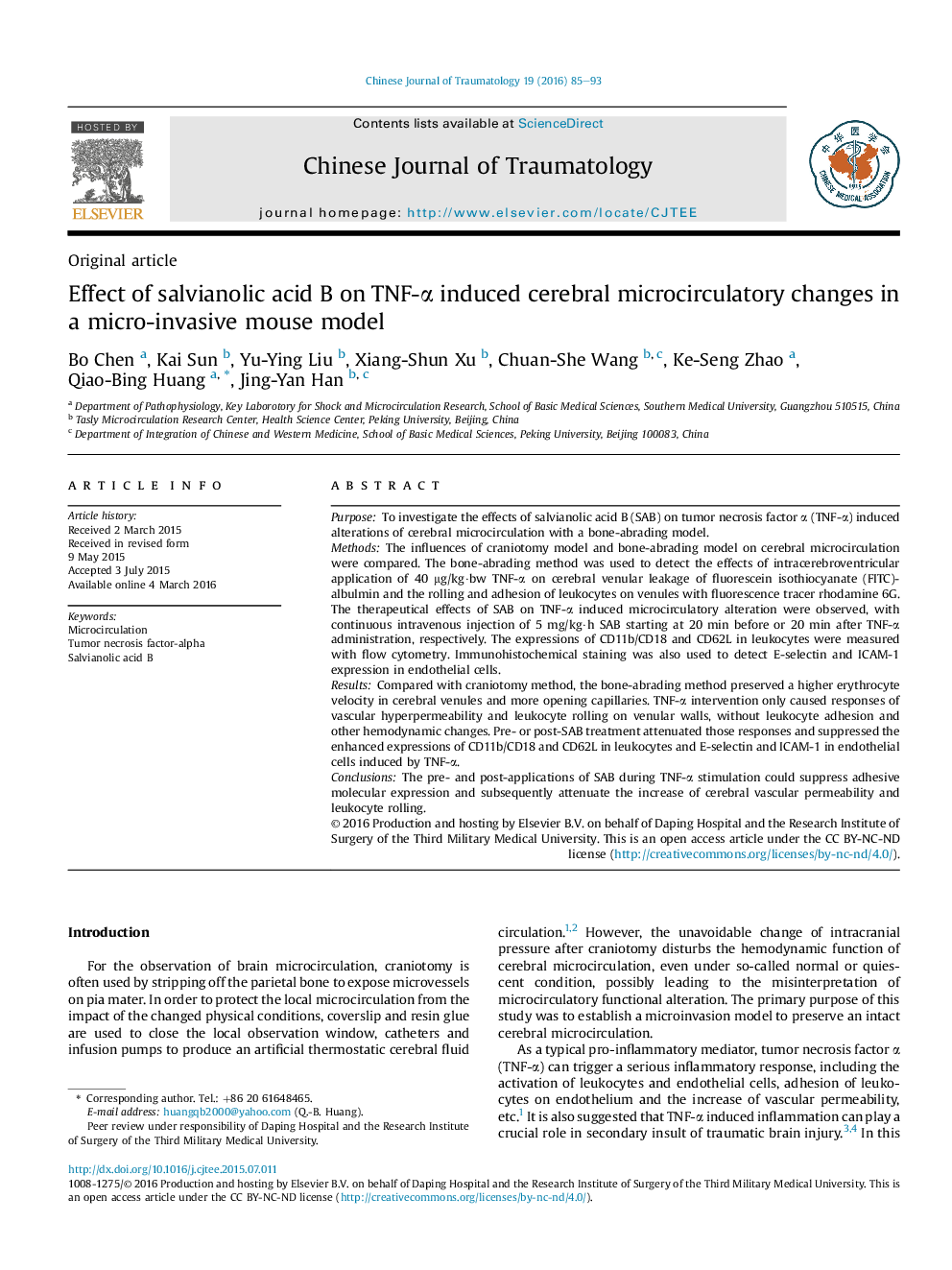| Article ID | Journal | Published Year | Pages | File Type |
|---|---|---|---|---|
| 3107071 | Chinese Journal of Traumatology | 2016 | 9 Pages |
PurposeTo investigate the effects of salvianolic acid B (SAB) on tumor necrosis factor α (TNF-α) induced alterations of cerebral microcirculation with a bone-abrading model.MethodsThe influences of craniotomy model and bone-abrading model on cerebral microcirculation were compared. The bone-abrading method was used to detect the effects of intracerebroventricular application of 40 μg/kg·bw TNF-α on cerebral venular leakage of fluorescein isothiocyanate (FITC)-albulmin and the rolling and adhesion of leukocytes on venules with fluorescence tracer rhodamine 6G. The therapeutical effects of SAB on TNF-α induced microcirculatory alteration were observed, with continuous intravenous injection of 5 mg/kg·h SAB starting at 20 min before or 20 min after TNF-α administration, respectively. The expressions of CD11b/CD18 and CD62L in leukocytes were measured with flow cytometry. Immunohistochemical staining was also used to detect E-selectin and ICAM-1 expression in endothelial cells.ResultsCompared with craniotomy method, the bone-abrading method preserved a higher erythrocyte velocity in cerebral venules and more opening capillaries. TNF-α intervention only caused responses of vascular hyperpermeability and leukocyte rolling on venular walls, without leukocyte adhesion and other hemodynamic changes. Pre- or post-SAB treatment attenuated those responses and suppressed the enhanced expressions of CD11b/CD18 and CD62L in leukocytes and E-selectin and ICAM-1 in endothelial cells induced by TNF-α.ConclusionsThe pre- and post-applications of SAB during TNF-α stimulation could suppress adhesive molecular expression and subsequently attenuate the increase of cerebral vascular permeability and leukocyte rolling.
